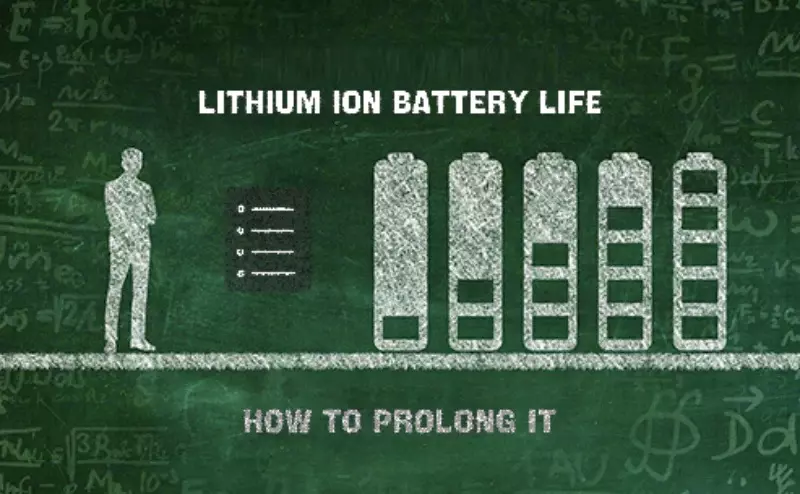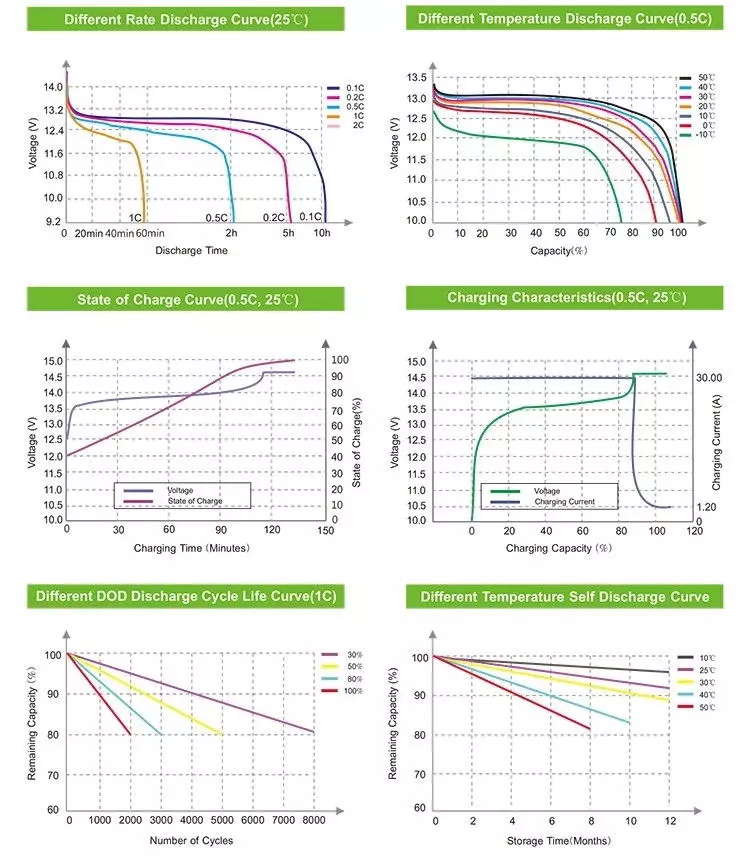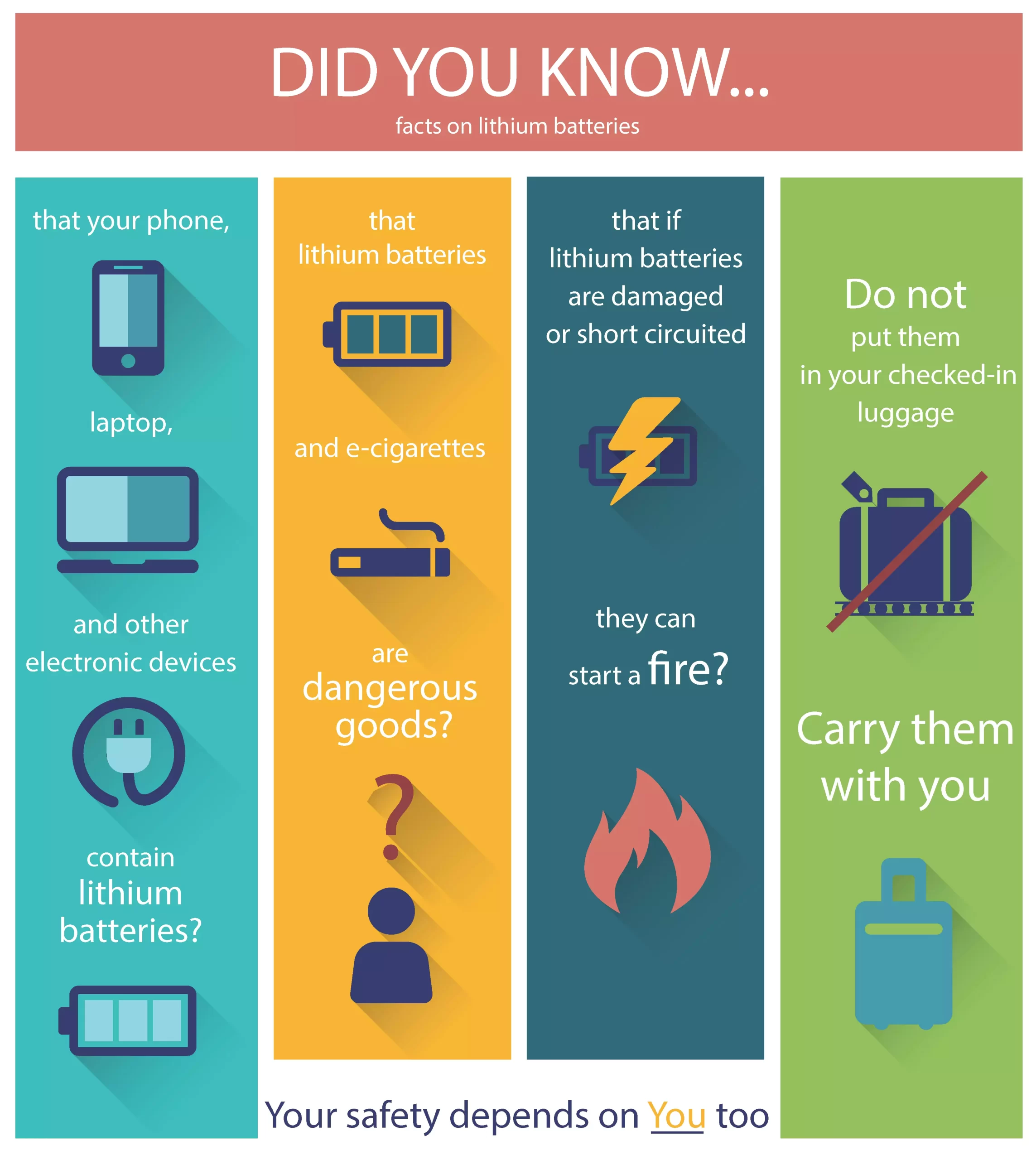The lithium battery cycle life refers to the number of times it can perform charge and discharge cycles, and maintain its rated capacity.
The battery cycle is closely related to capacity decay.
This article will elaborate on capacity decay, lithium battery cycle life, and safety.

The following are some common lithium battery capacity fading mechanisms:
1- Lithium ion migration: During charge and discharge, lithium ions migrate through the boundary layer between the electrolyte and the electrodes.
As the number of cycles increases, the migration rate of lithium ions between the electrolyte and electrodes slows down, leading to battery capacity fading.
2- Electrode material loss: The positive and negative electrode materials of the battery will undergo chemical reactions during charging and discharging.
As the number of cycles increases, the electrode materials will experience physical changes, structural damage, loss of active materials, etc., resulting in battery capacity decay.

3- The internal resistance of the battery increases: The internal resistance of the battery refers to the resistance generated by the battery during charging and discharging.
As the number of cycles increases, the internal resistance of the battery will gradually increase, resulting in a decrease in the discharge efficiency of the battery and capacity decay.
4- Electrolyte degradation: The electrolyte is an important part of the lithium battery.
As the number of cycles increases, the electrolyte will degrade, decompose and fail, resulting in battery capacity decay.
5- Battery Aging: As the number of cycles increases, physical and chemical changes inside the battery cause battery aging, which affects the capacity and performance of the battery.
When you find that the battery cannot be charged, you can check the health status of the battery through this article. — Click on the orange font to jump to the relevant page.
The above are some common lithium battery capacity fading mechanisms. The capacity fading mechanism may be different under different types of lithium batteries and usage conditions.
In order to prolong the cycle life of lithium batteries and slow down capacity fading, the following measures can be taken:
4 ways to extend battery cycle life:
In general, the cycle life of a lithium battery depends on many factors, including battery quality, usage conditions, and charge and discharge management.
Different types of lithium batteries, such as lithium-ion batteries (Li-ion) and lithium-polymer batteries (Li-polymer), may have different cycle life.
Taking lithium-ion batteries as an example, it is generally believed that it has a cycle life of 2000 to 3000 charge and discharge cycles.
This means that under normal use conditions, a lithium-ion battery can perform 2000 to 3000 complete charge and discharge cycles, and then its capacity will gradually decrease to about 80% of its original capacity.
After the battery cycle life is exceeded, the capacity loss of the battery will be more obvious, resulting in a shortened usage time.

To prolong the cycle life of lithium batteries, the following measures can be taken:
1- Avoid overcharging and discharging: Do not charge the battery to the state of overcharging or over-discharging to avoid extra pressure on the battery.
2- Control the operating temperature: Avoid exposing the battery to extreme temperatures, and try to use the battery within the recommended operating temperature range.
3- Avoid excessive use: Try to avoid long-term high-load or violent use of the battery to reduce the decrease in battery capacity.
4- Use a suitable charger: Use the charger provided by the original factory or a certified charger to ensure that the charging current and voltage are suitable.
There are many types of chargers on the market, how to choose to improve the charging efficiency of lithium batteries? You can learn more through this blog, Click on the orange text to learn more.
The safety performance of lithium battery:
Lithium batteries have certain safety risks in use, but these risks can be minimized through correct use and management measures.
Here are some key points and advice about lithium battery safety:
1- Avoid physical damage: Lithium batteries are fragile. Avoid bending, squeezing, or exposing the battery to high-temperature environments to prevent the battery package from being broken or damaged.
2- Use suitable chargers and devices: use the chargers provided by PVMars or certified chargers, and devices compatible with the battery.
Do not use untrusted or low-quality chargers to avoid overcharging, over-discharging, or overheating during charging.
3- Avoid overcharging and discharging: Try to avoid charging the battery to an overcharged or over-empty state, because this will put pressure on the battery, resulting in reduced battery capacity and increased safety risks.
4- Avoid high-temperature environments and overheating: Lithium batteries are prone to overheating in high-temperature environments, so avoid exposing the batteries to high temperatures, direct sunlight, or closed environments.
5- Avoid short circuits: Do not touch the positive and negative poles of the battery with metal objects or conductive substances, so as not to cause short circuits.
At the same time, place and carry the battery correctly to ensure that it does not come into contact with conductive objects such as metal devices and keys.

6- Replace aging batteries in a timely manner: the performance of lithium batteries will decay with the increase in use time, and aging batteries may have higher safety risks.
Therefore, replace aging batteries in due course, and try to choose batteries with regular brands and specifications.
7- If the battery is abnormal: such as abnormal phenomena such as battery heat, leakage, deformation, or smoke, stop using it immediately.
Keep the battery away from flammable and explosive items, and use special equipment for disposal or consult a professional.
All in all
Although the cycle life of a lithium battery is limited, the battery can continue to be used even if it exceeds the life span, but its capacity will be reduced.
Considering the cycle life of the battery and the actual use requirements, it may be necessary to replace the battery or perform maintenance in a timely manner.
The safety of lithium batteries requires proper use and management.
Following the instructions in the user manual, purchasing lithium batteries with regular brands and standards, avoiding exposure to extreme conditions, and replacing aging batteries in a timely manner are important measures to ensure the safety of lithium batteries.









